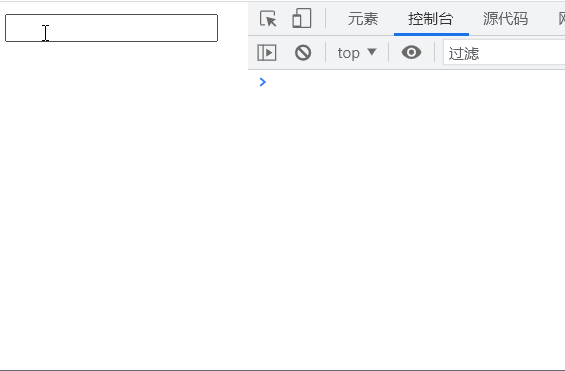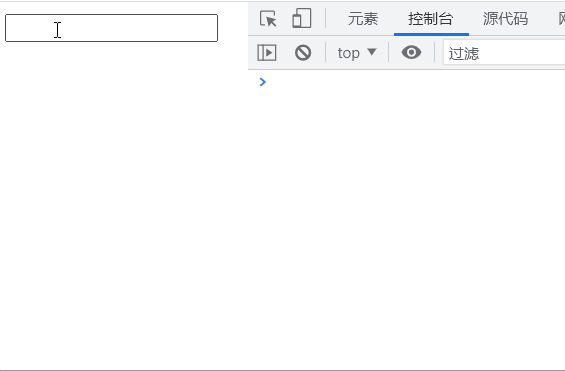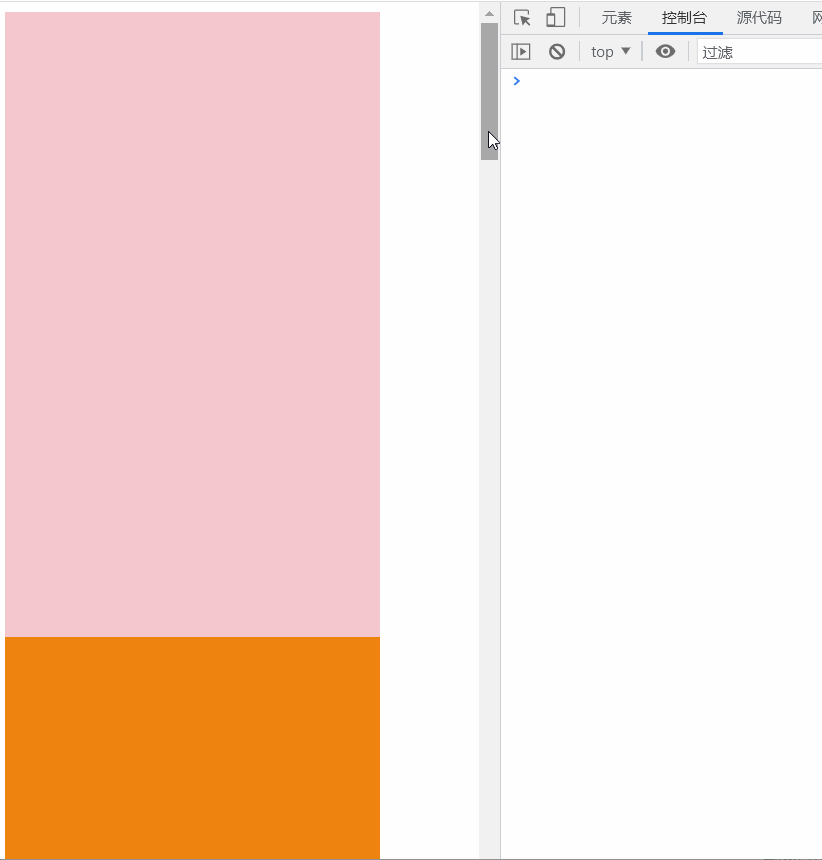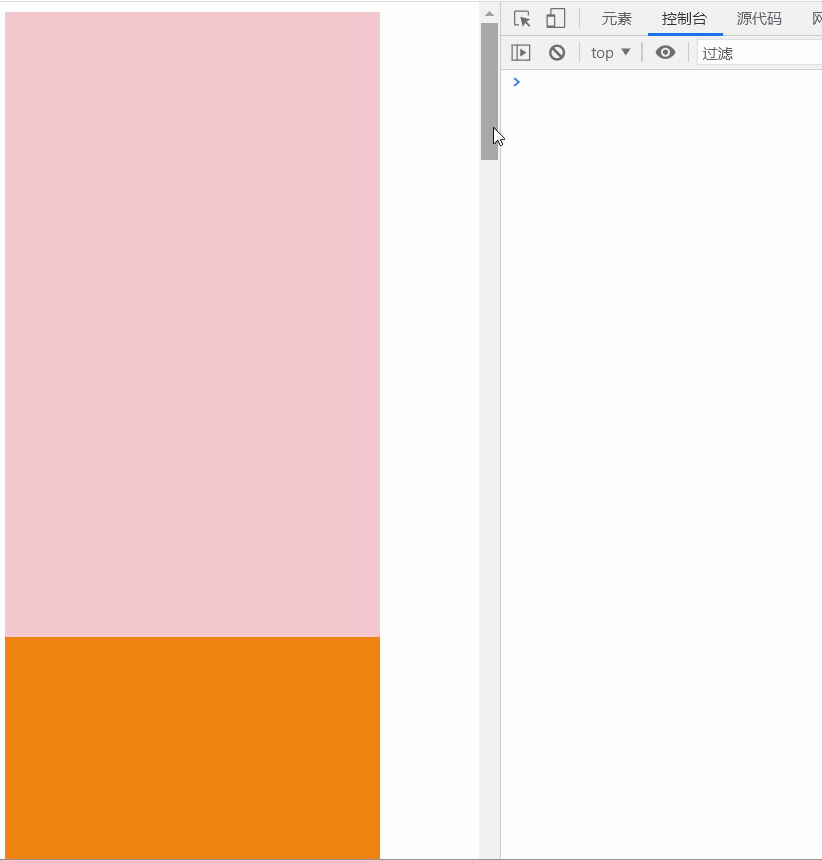前言
在进行窗口的操作或者输入框操作时,如果事件处理函数用的频率无限制,会加重浏览器和服务器的负担,此时我们就可以用防抖(debounce)和节流(throttle)的方式来减少调用频率,同时又不影响实际效果。
什么是防抖和节流?
防抖:在设定的时间内触发一次事件,会在设定的时间结束之后执行该事件处理程序,如果在设定的时间内多次触发事件,则每次触发事件都会重新计时。(可以将防抖类比成电梯:第一个人进电梯之后,电梯会在5秒之后自动关闭电梯门,如果在这5秒内又有人进来了,那么电梯会重新等待5秒后再关门。)
简单理解就是:单位时间内,频繁触发一个事件,以最后一次触发为准。
节流:在设定的时间内多次触发事件,只会在设定的时间结束后执行一次。
简单理解就是:单位时间内,频繁触发一个事件,只会触发一次。
防抖的应用场景:
主要用来监听input输入框:我们在搜索内容的时候一般都会有搜索提示,它是通过input事件获取用户输入的内容,然后发送数据请求给后端,后端返回搜索提示内容。我们希望等待用户输入结束之后再发送请求,而不是输入一个发一次请求,这时候就需要使用防抖函数来实现。
节流的应用场景:
监听scroll滚动事件、按钮点击等等
如何实现防抖和节流?
防抖主要使用定时器来实现:
//func 是事件处理程序,delay 是事件执行的延迟时间,单位:毫秒
function debounce(func, delay){
var timer = null;
return function(){
var that = this;
var args = arguments
//每次触发事件 都把定时器清掉重新计时
clearTimeout(timer)
timer = setTimeout(function(){
//执行事件处理程序
func.call(that, args)
}, delay)
}
}例子:
(1)不使用防抖函数:
<body>
<input type="text">
<script>
var inp = document.getElementsByTagName('input')[0]
//获取输入框的输入内容
inp.oninput = function(){
console.log(this.value);
}
</script>
</body>
(2)使用防抖函数:
<body>
<input type="text">
<script>
function debounce(func, delay){
var timer = null;
return function(){
var that = this;
var args = arguments
clearTimeout(timer)
timer = setTimeout(function(){
func.call(that, args)
}, delay)
}
}
var inp = document.getElementsByTagName('input')[0]
function handler(){
console.log(this.value);
}
inp.addEventListener('input', debounce(handler, 1000))
</script>
</body>
节流的实现有两种方式:
1、使用时间戳实现
//func 是事件处理程序,delay 是事件执行的延迟时间,单位:毫秒
function throttle(func, delay){
//定义初始时间(开始触发事件的时间)
var start = 0;
return function(){
var that = this;
var args = arguments;
//获取当前时间戳
var current = Date.now();
// 判断当前时间与初始时间是否超过间隔
if(current - start >= delay){
//执行事件处理程序
func.call(that, args)
//更新初始时间
start = current;
}
}
}2、使用定时器实现
function throttle(func, delay){
var timer = null;
return function(){
var that = this;
var args = arguments
if(!timer){
timer = setTimeout(function(){
//执行事件处理程序
func.call(that, args)
//事件执行完后把定时器清除掉,下次触发事件的时候再设置
timer = null;
}, delay)
}
}
}例子:
(1)不使用节流函数
<body>
<div style="height: 500px; width: 300px; background-color: rgb(244, 199, 207);"></div>
<div style="height: 500px; width: 300px; background-color: rgb(239, 131, 16);"></div>
<div style="height: 500px; width: 300px; background-color: rgb(11, 66, 194);"></div>
<div style="height: 500px; width: 300px; background-color: rgb(177, 21, 244);"></div>
<div style="height: 500px; width: 300px; background-color: rgb(75, 180, 115);"></div>
<div style="height: 500px; width: 300px; background-color: rgb(163, 122, 150);"></div>
<div style="height: 500px; width: 300px; background-color: rgb(39, 34, 35);"></div>
<div style="height: 500px; width: 300px; background-color: rgb(209, 218, 40);"></div>
<div style="height: 500px; width: 300px; background-color: rgb(63, 179, 215);"></div>
<script>
function handler(){
console.log('页面发生了滚动');
}
document.addEventListener('scroll', handler)
</script>
</body>
(2)使用节流函数
<body>
<div style="height: 500px; width: 300px; background-color: rgb(244, 199, 207);"></div>
<div style="height: 500px; width: 300px; background-color: rgb(239, 131, 16);"></div>
<div style="height: 500px; width: 300px; background-color: rgb(11, 66, 194);"></div>
<div style="height: 500px; width: 300px; background-color: rgb(177, 21, 244);"></div>
<div style="height: 500px; width: 300px; background-color: rgb(75, 180, 115);"></div>
<div style="height: 500px; width: 300px; background-color: rgb(163, 122, 150);"></div>
<div style="height: 500px; width: 300px; background-color: rgb(39, 34, 35);"></div>
<div style="height: 500px; width: 300px; background-color: rgb(209, 218, 40);"></div>
<div style="height: 500px; width: 300px; background-color: rgb(63, 179, 215);"></div>
<script>
function throttle(func, delay){
var timer = null;
return function(){
var that = this;
var args = arguments
if(!timer){
timer = setTimeout(function(){
//执行事件处理程序
func.call(that, args)
//事件执行完后把定时器清除掉,下次触发事件的时候再设置
timer = null;
}, delay)
}
}
}
function handler(){
console.log('页面发生了滚动');
}
document.addEventListener('scroll', throttle(handler, 1000))
</script>
</body> 